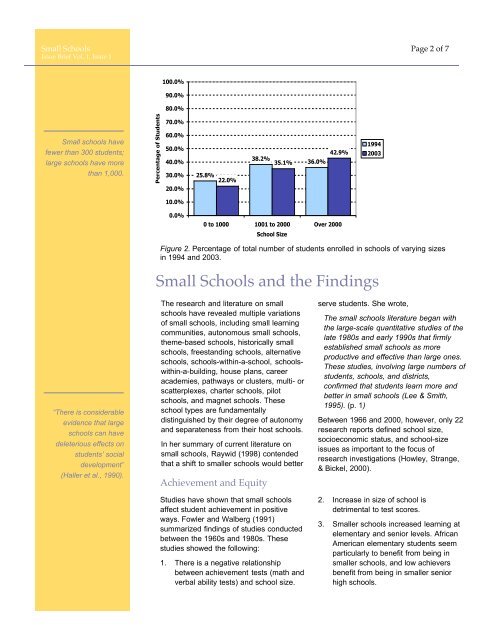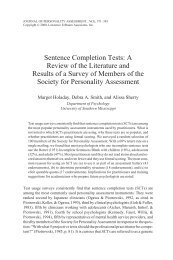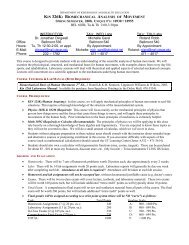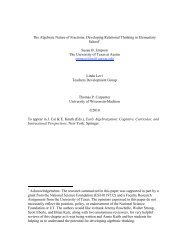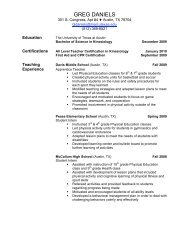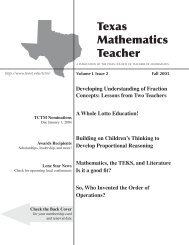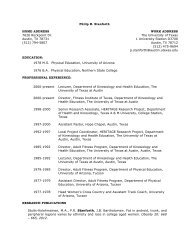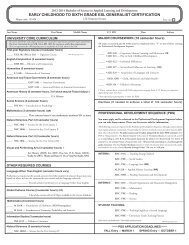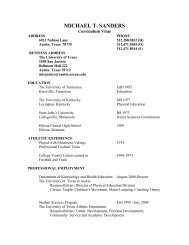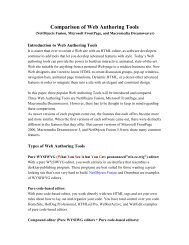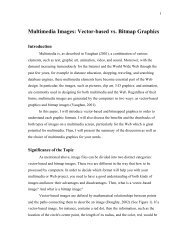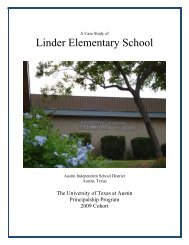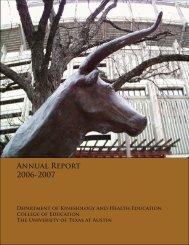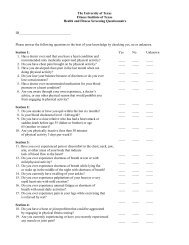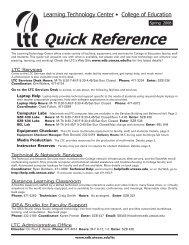High Schools: Size Does Matter - The College of Education - The ...
High Schools: Size Does Matter - The College of Education - The ...
High Schools: Size Does Matter - The College of Education - The ...
You also want an ePaper? Increase the reach of your titles
YUMPU automatically turns print PDFs into web optimized ePapers that Google loves.
Small <strong>Schools</strong> Page 2 <strong>of</strong> 7<br />
Issue Brief Vol. 1, Issue 1<br />
Small schools have<br />
fewer than 300 students;<br />
large schools have more<br />
than 1,000.<br />
“<strong>The</strong>re is considerable<br />
evidence that large<br />
schools can have<br />
deleterious effects on<br />
students’ social<br />
development”<br />
(Haller et al., 1990).<br />
Percentage <strong>of</strong> Students<br />
100.0%<br />
90.0%<br />
80.0%<br />
70.0%<br />
60.0%<br />
50.0%<br />
40.0%<br />
30.0%<br />
20.0%<br />
10.0%<br />
0.0%<br />
25.8%<br />
22.0%<br />
38.2%<br />
Figure 2. Percentage <strong>of</strong> total number <strong>of</strong> students enrolled in schools <strong>of</strong> varying sizes<br />
in 1994 and 2003.<br />
Small <strong>Schools</strong> and the Findings<br />
<strong>The</strong> research and literature on small<br />
schools have revealed multiple variations<br />
<strong>of</strong> small schools, including small learning<br />
communities, autonomous small schools,<br />
theme-based schools, historically small<br />
schools, freestanding schools, alternative<br />
schools, schools-within-a-school, schoolswithin-a-building,<br />
house plans, career<br />
academies, pathways or clusters, multi- or<br />
scatterplexes, charter schools, pilot<br />
schools, and magnet schools. <strong>The</strong>se<br />
school types are fundamentally<br />
distinguished by their degree <strong>of</strong> autonomy<br />
and separateness from their host schools.<br />
In her summary <strong>of</strong> current literature on<br />
small schools, Raywid (1998) contended<br />
that a shift to smaller schools would better<br />
Achievement and Equity<br />
35.1%<br />
Studies have shown that small schools<br />
affect student achievement in positive<br />
ways. Fowler and Walberg (1991)<br />
summarized findings <strong>of</strong> studies conducted<br />
between the 1960s and 1980s. <strong>The</strong>se<br />
studies showed the following:<br />
1. <strong>The</strong>re is a negative relationship<br />
between achievement tests (math and<br />
verbal ability tests) and school size.<br />
36.0%<br />
42.9%<br />
0 to 1000 1001 to 2000 Over 2000<br />
School <strong>Size</strong><br />
1994<br />
2003<br />
serve students. She wrote,<br />
<strong>The</strong> small schools literature began with<br />
the large-scale quantitative studies <strong>of</strong> the<br />
late 1980s and early 1990s that firmly<br />
established small schools as more<br />
productive and effective than large ones.<br />
<strong>The</strong>se studies, involving large numbers <strong>of</strong><br />
students, schools, and districts,<br />
confirmed that students learn more and<br />
better in small schools (Lee & Smith,<br />
1995). (p. 1)<br />
Between 1966 and 2000, however, only 22<br />
research reports defined school size,<br />
socioeconomic status, and school-size<br />
issues as important to the focus <strong>of</strong><br />
research investigations (Howley, Strange,<br />
& Bickel, 2000).<br />
2. Increase in size <strong>of</strong> school is<br />
detrimental to test scores.<br />
3. Smaller schools increased learning at<br />
elementary and senior levels. African<br />
American elementary students seem<br />
particularly to benefit from being in<br />
smaller schools, and low achievers<br />
benefit from being in smaller senior<br />
high schools.


